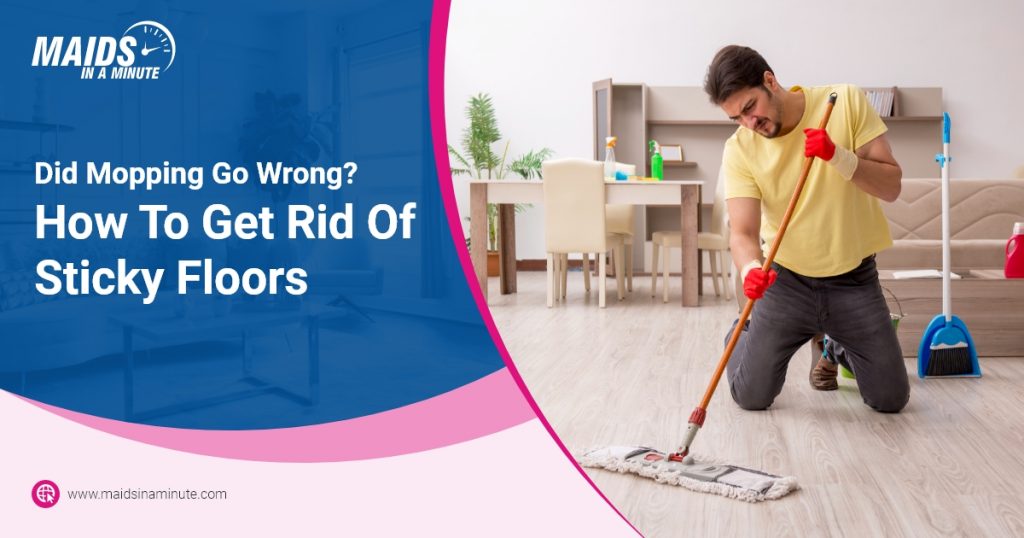
Cleaning floors may seem simple at first: all you have to do is wipe them after all. However, things get complicated when the floors end up sticky after mopping—what went wrong?
Finding what causes this issue can be tricky, but the fix is straightforward. Follow this simple guide to leave your floors squeaky clean!
Do you want spotless floors? Consider this before mopping!
Mopping might not be the most challenging housework task, but there are a few things you should do first to get the best results:
- Use the right cleaner: Depending on the materials, your floor might have different needs. Double-check that the cleaner you purchase works specifically for your type of flooring.
- Dilute the cleaning agent: Some people may think that the more cleaning products they pour onto their floors, the cleaner they will be. However, floor cleaners can leave a sticky residue if you use too much. Always follow the instructions on the label!
- Wash the mop: If you clean your floors with a dirty mop, you’ll have a hard time achieving impressive results. On top of washing the mophead between cleanings, you should rinse your tool frequently while mopping and change the water as needed.
Learning what caused the sticky floor in the first place could help you a little. However, the bad news is that there’s only one truly effective way to solve the issue: Mopping again.
Step 1. Wipe with a cleaning solution
First, grab the floor cleaner of your choice and follow the guidelines on the label—make sure to get the correct ratio for your cleaning solution.
Then, dip your mop in the bucket or container and wipe the floor as you usually do. That’s it! Just be thorough to ensure all the sticky spots are covered.
Pro-tip: If you are cleaning a large floor, you can work steps #1 and #2 by sections. This way, you will ensure the cleaning solution won’t dry before rinsing the floor.
Step 2. Rinse with water
After you clean your floors, rinse them with clear water to eliminate any residue from the cleaning solution that may have been left behind. Many homeowners may see this step as mopping the floors again, but it’s the only way to guarantee your floors won’t be sticky.
Note: If you have hardwood flooring, using too much water could damage it. When rinsing the floors, ensure to wring out your mop well to leave it only slightly damp.
Step 3. Dry the floors
As a last precaution when cleaning your floors, you can give them a final wipe with a dry mop. Another way to remove the moisture is to leave the floor to air dry with a fan on and the windows open.
Once your floors are dry, they should be in top shape!
Are sticky floors a common issue in your house?
Sometimes, that sticky film covering the floor is just grime. If you are unsure why your floors are always sticky, you may be mopping less frequently than you should.
Ironically, mopping more frequently doesn’t mean you have to spend more time cleaning your floors. If you keep up with a regular cleaning routine, the spills won’t set, and this chore will take less time.
Too busy to clean regularly? Maids In A Minute can help!
Sometimes, there’s not enough time to wipe and dust every surface in your house. However, you can get in touch with a professional cleaner easier than you think! Maids In A Minute offers affordable and reliable cleaning services in Michigan.
